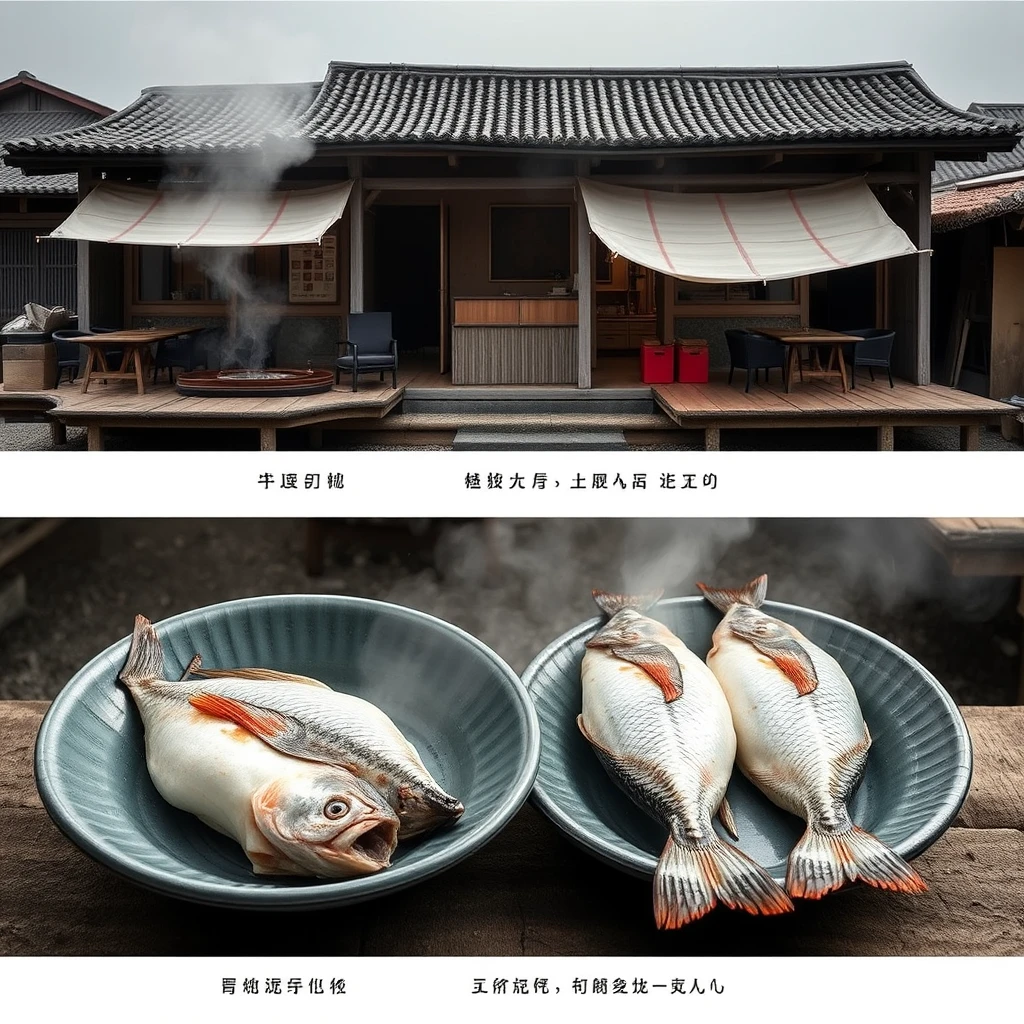Flux AI Image Generator로 생성된 AI 이미지

프롬프트
Folding Phase One During the late Ming and early Qing dynasties, a large number of immigrants from the rice and fish-rich Jiangnan region came to Laifeng, particularly during the "Huguang Filling Sichuan" migration. In addition to continuing to farm and raise fish, they brought with them the cooking techniques for fish from Jiangnan to Bayu. The integration of these techniques with Bayu’s local flavors led to the legendary origin of modern Laifeng fish skills at the Deng Family Fish Restaurant during the Kangxi era. This restaurant combined flavors from Fujian, Hubei, Guangdong, and Hunan cuisines with traditional Laifeng fish cooking methods, using double chili peppers to create the well-loved "Spicy Fish." This roughly marks the embryonic form of "Laifeng Fish." Folding Phase Two During the Anti-Japanese War period, with the central government relocating to Chongqing, Laifeng emerged as a satellite town of the wartime capital, attracting a gathering of renowned chefs and dignitaries. With the beautiful fish from the Jibing River, chefs vied to showcase their culinary skills, significantly enhancing the cooking techniques of "Laifeng Fish." Many officials and social elites gathered in Laifeng to enjoy its fresh fish, and during that time, "Laifeng Fish" became quite famous. Folding Phase Three During the reform and opening-up period, in 1984, the central government issued Document No. 1 regarding rural work. The Laifeng District Committee of the Communist Party and the Laifeng District Government, in accordance with the spirit of Document No. 1, carefully formulated preferential policies to encourage farmers to work and do business in cities. The district committee and government leaders personally helped farmers who entered the town for work and business to resolve specific issues such as land requisition, obtaining licenses and loans. Some entrepreneurial farmers began to plan the establishment of fresh fish restaurants in Laifeng Town. The then County Party Secretary, Hu Zhaomu, even personally congratulated the newly opened restaurants. By 1988, there were over 120 establishments mainly serving "Laifeng Fish." Competition drove Laifeng residents to continually research fish cooking techniques, resulting in a variety of new flavors, including spicy, sweet, sour, lychee, orange, osmanthus, and pineapple, resulting in dozens of fish dishes such as pearl fish, amber fish pieces, salt and pepper fish fillets, sauerkraut fish soup, white jade fish pieces, agate fish intestines, tiger skin fish, mouth-opening fish, dipping fish, steamed fish with rice flour, roasted white fish, crispy fish, as well as various fish roe, fish floss, fish paste, and fish soup, totaling hundreds of fish dishes.
이미지 분석
감정 분석
응용 시나리오
Laifeng Fish Culinary Workshop
설명: A culinary workshop focusing on the history and techniques of Laifeng fish cooking.
잠재적 사용: To educate culinary students and food enthusiasts about Laifeng's unique fish cooking methods and their historical context.
Laifeng Food Festival
설명: A food tourism campaign targeting regional cuisines, highlighting Laifeng's fish dishes.
잠재적 사용: To attract tourists and food lovers interested in discovering authentic regional Chinese dishes and culinary heritage.
Culinary History of Laifeng
설명: A cultural presentation showcasing the evolution of Laifeng cuisine through different historical phases.
잠재적 사용: To promote awareness of cultural heritage and the impact of migration on local cuisines.
Laifeng Fish Cooking Contest
설명: A competitive cooking event featuring Laifeng fish recipes.
잠재적 사용: To inspire chefs and home cooks to innovate with traditional Laifeng fish dishes, fostering creativity and local pride.
Taste of Tradition: Laifeng Fish
설명: A documentary series exploring the evolution of Chinese regional cuisines, focusing on Laifeng.
잠재적 사용: To document and preserve culinary traditions while gaining interest in local gastronomy.
기술 분석
품질 평가: The text provides a comprehensive historical overview of Laifeng's culinary evolution but could benefit from deeper personal insights.
- Well-structured phases detailing historical context
- Integration of various regional influences in cooking methods
- Clear depiction of cultural significance through migration
- Including more detailed recipes of Laifeng fish dishes
- Expanding on the social and cultural impacts of the fish restaurant boom
- Adding personal anecdotes from chefs to provide a richer narrative